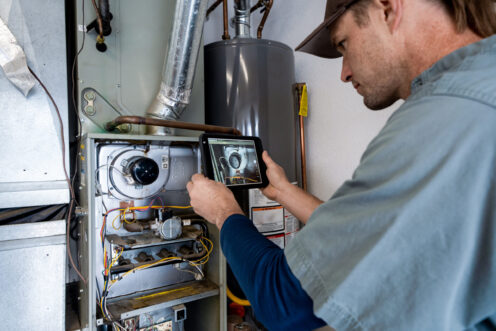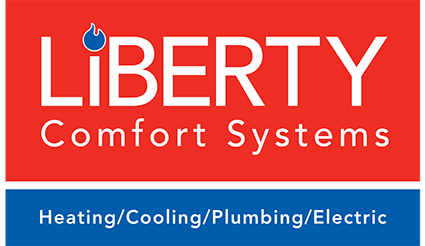
In the warm seasons, it is easy to forget your furnace only to turn it back on when the temperatures drop. A warm home is a retreat you deserve after a day outdoors during the cold season. What happens when your furnace blows in cold air instead of the expected warmth? This inconvenience is frustrating and can be a source of worry as it is a sign of an underlying problem. Understanding why your furnace blows cold air can help you troubleshoot the problem and know when to call a professional.
1. Thermostat Problems
Several things related to the thermostat can result in cold air from your furnace. The thermostat is the command center, which dictates when the furnace goes on or off. Incorrect settings can make your furnace run continuously even when it is not working to produce heat. You may have set your unit to “on,” making the blowers run even when the burner is not heating air. Ensure the thermostat is set to “auto” so the furnace and the fan can come on simultaneously.
You may have set the thermostat to “cool” or a temperature lower than the room’s during the warmer days. The thermostat signals the furnace to run but will not engage the heating components. A faulty thermostat may also compromise the communication with the furnace. Your heating system may fail to receive proper instructions, and this can cause cold air to blow from your furnace. Replacing your thermostat can solve this problem. You may consider upgrading to a smart thermostat for better control over indoor temperature.
2. Dirty or Clogged Air Filter
Air filters trap dirt, dust, and other air pollutants from the air moving into your furnace. After a time, they can become clogged with filtered particles, leading to restricted airflow. The furnace has to work harder to draw in air, which can cause the system to overheat. Furnaces have safety mechanisms that shut them down to prevent damage and fire hazards when the temperature exceeds the acceptable range. The burners turn off, but the blower fans may continue blowing cold air into your home.
After the heating components cool down, the system may start again, but it shuts off if you do not replace the air filter. Depending on the type of air filter, you can clean or replace it—most air filter manufacturers advise homeowners to replace the filters after every three months.
3. Leaking Air Ducts
The ductwork is responsible for distributing warm air throughout your home. Did you know approximately 20-30% of the heated air moving through the ductwork escapes in leaks? Gaps, cracks, and loosely connected duct parts allow cold air to flow into the vents. Warm air may also leak into unconditioned spaces before reaching destined rooms. This will result in uneven heating, which you might perceive as cold air.
Leakages lead to energy loss and higher heating bills. The leaks can be due to old age or destruction by pests and pets. Regular furnace inspection and maintenance will help identify and repair them to ensure optimal air distribution.
4. Pilot Light or Flame Sensor Problems
Newer furnace models have an electric pilot light, which only burns when heating is needed. However, older furnaces have a continually burning pilot light that ignites the fuel. The pilot light assembly may be covered in debris, interfering with light burning. You can notice pilot light issues if flickering or one side struggles to light. The flame should burn in a blue color, and a yellow flame may indicate a blockage.
A flame sensor detects the presence of a flame and signals the gas valve to open and release the fuel. If it is dirty or covered in soot, its visibility is limited, and it can lead to gas supply interruption. Depending on the furnace, it can go into a cycle even when there is no flame and the blower fan continues blowing air.
5. Problems with Gas Supply
Your unit relies on a steady gas supply if you have a gas furnace. A problem in the supply line, like blockages or leakages, may reduce or stop gas flow. It may also be due to inadequate gas in your tank. Most gas furnaces deactivate with insufficient gas supply.
If you suspect issues with the gas supply cause cold air, consider checking with your gas company or calling a professional. There are high risks involved with attempting a DIY repair on a gas furnace, as you may cause gas leakage. Natural gas is odorless and colorless; without an odorant, you cannot tell when there is a leakage. This can cause fire hazards or health hazards for your family.
6. Overheating Furnace
A safety mechanism shuts off your furnace when it overheats, but the blower may continue running. Besides air flow restriction by a clogged air filter, there are other reasons why the furnace may overheat. A clogged filter may allow dirt and debris into the furnace components, and they can cause overheating. Mechanical failures due to wear and tear reduce the system’s efficiency, and it may need more work to try to meet the heat demand.
Furnaces have a lifespan of around 15 years. Past this age, especially without proper maintenance, the efficiency reduces. Specific components like the burner, flame sensor, or gas supply line may fail and can also result in overheating.
7. Faulty Circuit Board
The circuit board relays instructions to various components. When it receives the signal for a new heating cycle from the thermostat, the circuit board forwards the instruction to the blower fan and the furnace burner. Sometimes, this component may have faults, and it signals the blower fan to run but fails to signal the furnace burner.
A circuit board may fail due to a lack of cleaning and maintenance. If your furnace is dripping on the circuit board, it may turn off electrical components.
8. Improper Furnace Size
An improperly sized furnace may struggle to heat your home to the desired temperature. It can run continuously without achieving the desired temperature if it is too small. You can solve this problem by upgrading your system to a larger one. Consult a professional to determine the proper size for your home.
9. Your Furnace Isn’t Warmed Up Yet
When you turn on your furnace after a long period without use, you may notice a blast of cold air because heating doesn’t happen instantly. You should wait several minutes to let your furnace heat up before it starts blowing warm air. This can take approximately 10-15 minutes.
Furnaces are complex systems that require professional expertise to repair. If you are an Anoka, MN, resident and notice your furnace blowing cold air, contact experienced technicians at Liberty Comfort Systems. We have trained and certified technicians who provide heating and cooling services for any make or model. We also offer indoor air quality services. Our company is a recognized Lennox Premier Dealer, NATE and EPA certified. We also provide electric and plumbing services. Contact Liberty Comfort Systems today for issues that compromise your indoor comfort.

